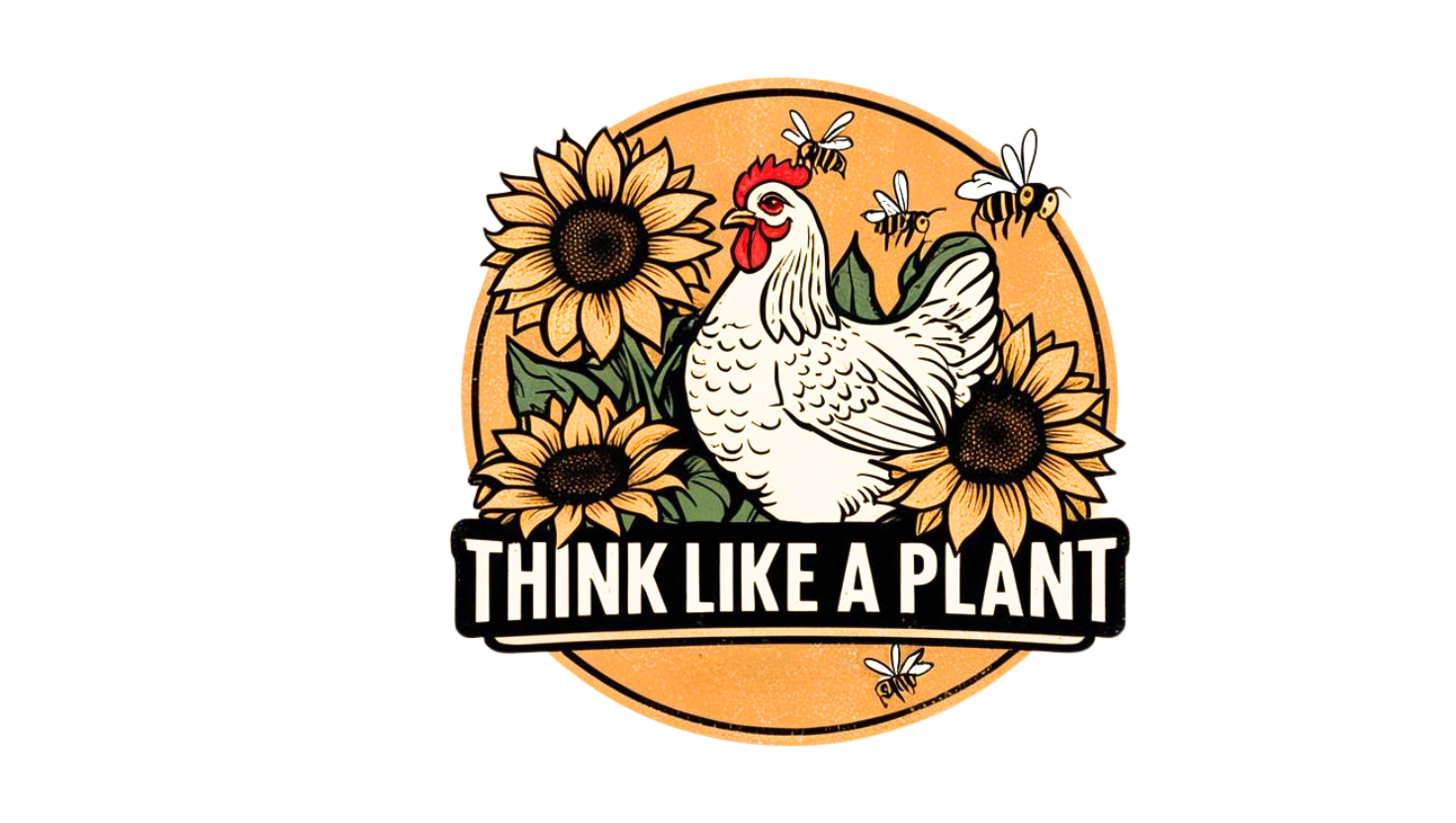Understanding Seedling Stunting: Common Causes and Solutions for Healthy Growth

Introduction
Growing plants from seeds is an exciting journey for any gardener, but it can be disheartening and frustrating when seedlings fail to thrive, showing little to no growth. This is referred to stunted seedlings and it is a common issue in gardening that affects the healthy growth of plants, leads to future growth problems, or the plant fails to thrive altogether.
Understanding the causes of stunting and implementing effective solutions is crucial for cultivating healthy plants. Lets explore the common causes of seedling stunting and provide practical solutions to ensure your seedlings thrive.
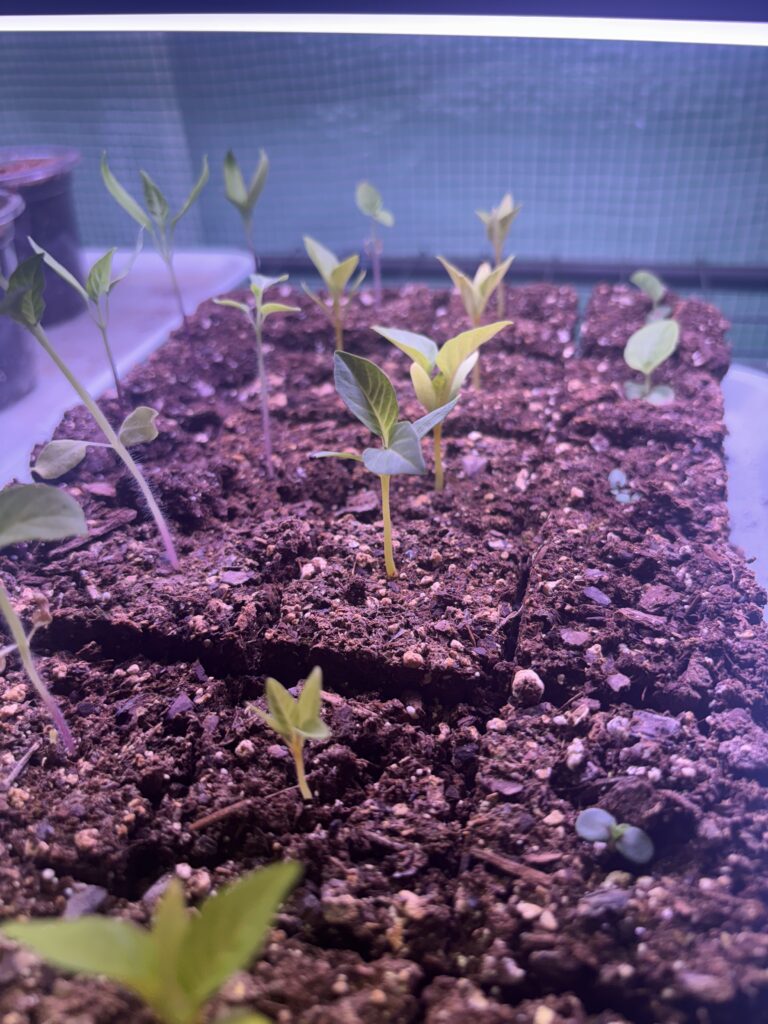
What is Seedling Stunting?
Stunted seedlings are young plants that have not developed properly, showing signs of reduced or minimal growth compared to their healthy counterparts. This stunting can be caused by various environmental, biological, and nutritional factors, leading to overall poor plant development.
These young plants exhibit limited growth, often characterized by small leaves, shortened stems, yellowing leaves, appearing weak and overall unhealthy. While all plants can experience stunting, it is particularly noticeable in seedlings due to their vulnerable state. Addressing the issue promptly is vital, as stunted seedlings may struggle to develop into mature, productive plants.
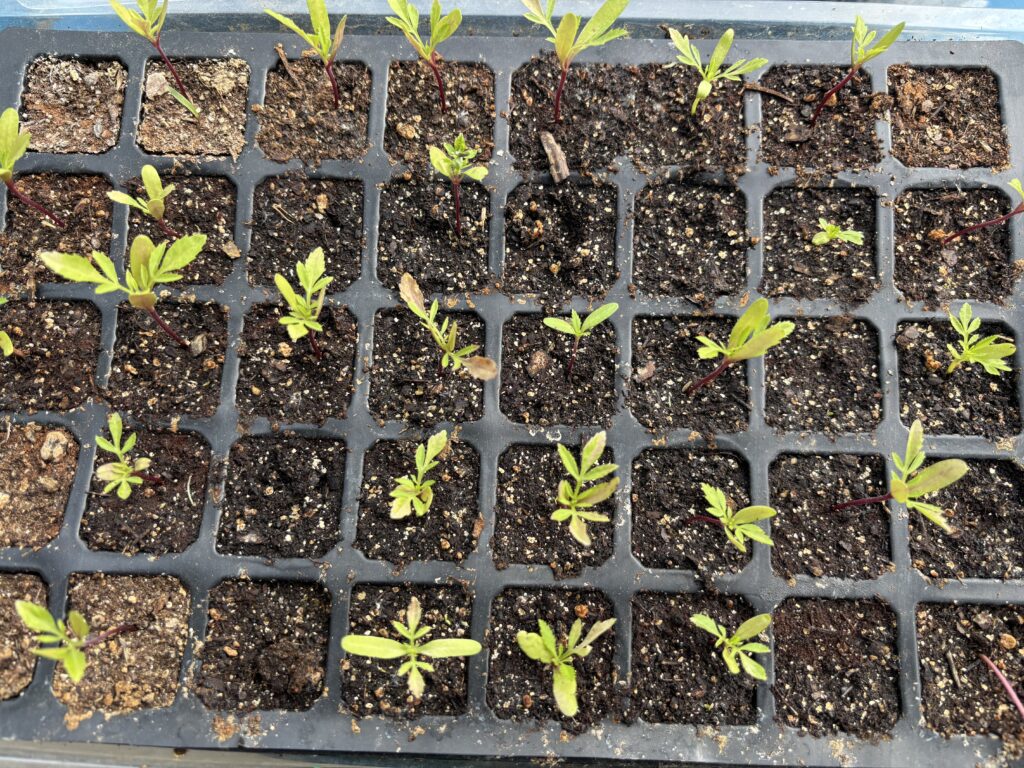
Common Causes of Seedling Stunting
1. Nutrient Deficiencies
Plants require essential nutrients, such as nitrogen, phosphorus, and potassium, for healthy growth. A lack of these nutrients can lead to stunted growth. For example, nitrogen deficiency often results in yellowing leaves, while phosphorus deficiency can cause poor root development.
2. Overwatering or Underwatering
Consistent moisture is crucial for seedling health, but both overwatering and underwatering can lead to stunting. Overwatering can suffocate roots and lead to root rot, while underwatering causes stress, dehydration and hinders nutrient uptake.
3. Poor Soil Quality
The quality of the soil plays a significant role in the success of seedlings. Compacted soil, poor drainage, or a lack of organic matter can inhibit root growth and nutrient uptake. Seedlings require a loose, nutrient-rich medium for optimal root development and access to moisture.
4. Insufficient Light
Seedlings need adequate amount of light for photosynthesis, the process by which plants convert light into energy. Insufficient light can lead to weak, leggy and spindly plants that struggle to thrive. On the other hand, too much direct sunlight can cause leaf burn and stress.
5. Pest Infestations
Pests such as aphids, spider mites, and fungus gnats can weaken young plants. These pests may feed on the sap of seedlings, weakening them and leading to stunted growth.
6. Diseases
Fungal, bacterial, or viral diseases can negatively impact seedling health. Root rot, damping-off disease, and leaf blight are common concerns that can hinder growth and development.
7. Temperature Extremes
Seedlings are particularly sensitive to temperature fluctuations. Excessively hot or cold temperatures can stress seedlings, leading to stunted growth. It’s essential to maintain a consistent and suitable environment for young plants.
8. Crowded Seedlings
Overcrowding your seedlings leads to a competition for resources like light, water, and nutrients. Thinning out your seedlings by removing the weaker ones will give your stronger seedling extra room to grow healthier and make it to transplanting.
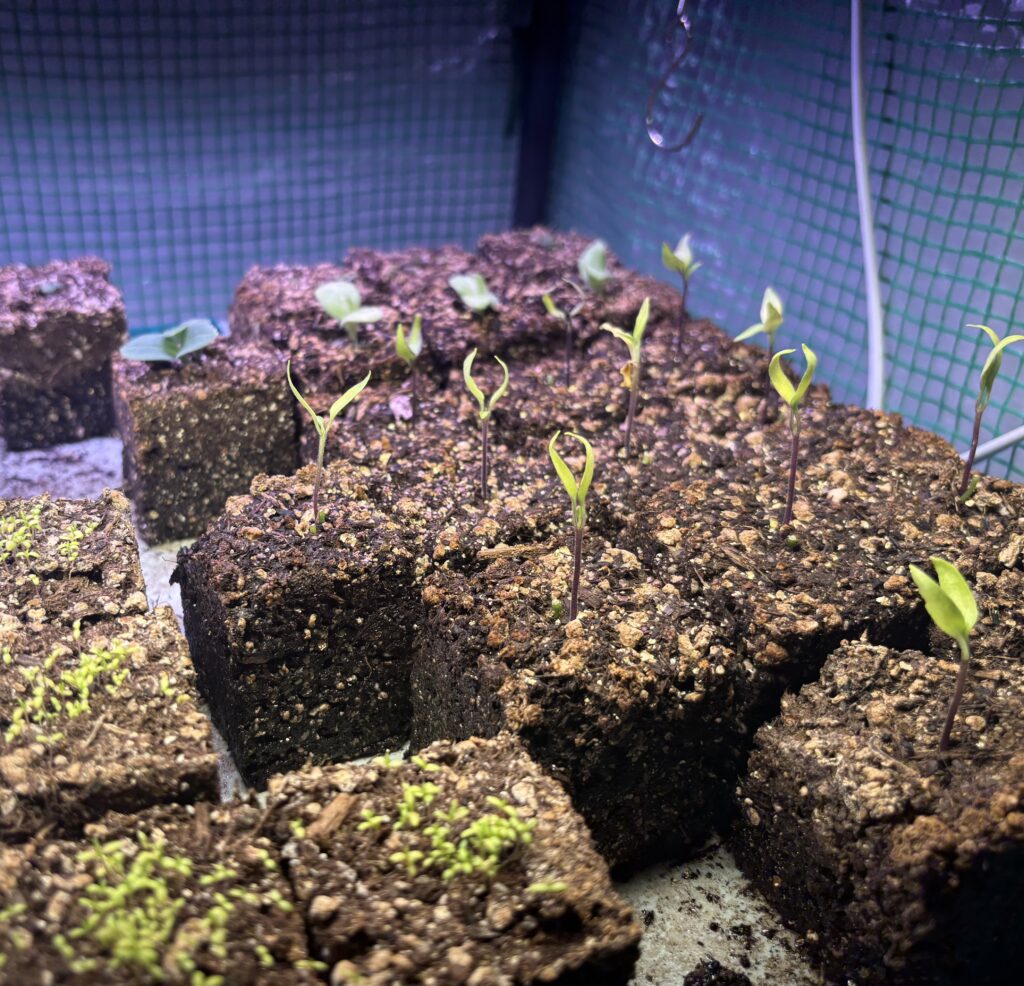
Symptoms of Stunted Seedlings
Recognizing the signs of stunted seedlings is crucial for timely intervention. Here are some common symptoms to look out for:
- Slow Growth – Noticeably slower growth rates compared to other seedlings of the same species.
- Yellowing Leaves – Leaves may turn yellow due to nutrient deficiencies or overwatering.
- Wilting – Seedlings may appear limp or lifeless, indicating they are not receiving enough water.
- Discolored or Dropping Leaves – Irregular discoloration or leaves falling off prematurely can be signs of disease or pest damage.
- Root Issues – If you gently remove the seedling from the soil, you may find blackened or mushy roots, indicating root rot.
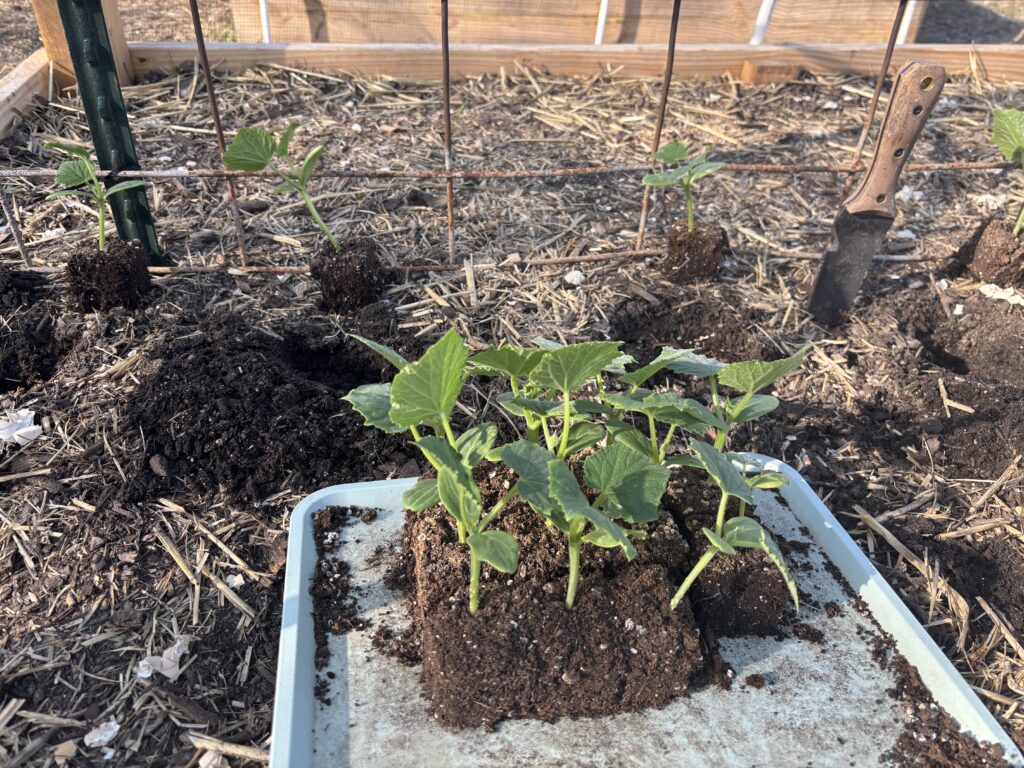
Solutions to Encourage Healthy Seedling Growth
1. Fertilize Appropriately
Ensure your seedlings receive the right nutrients by using a balanced, diluted fertilizer once your seedlings develop their first set of true leaves. On the other hand, don’t over-fertilize, as this can burn them at their young stage. Consider using earth worm casting or fish emulsion to stay on the safe side and avoid burning your seedlings. If needed, conduct a soil test to identify any nutrient deficiencies and amend the soil based on the results to ensure all necessary nutrients are present.
2. Watering Wisely
Water your seedlings consistently, allowing the soil to dry out slightly between waterings. Ensure pots have drainage holes to prevent overwatering. Implementing a drip irrigation system or using self-watering pots can help maintain optimal moisture levels.
3. Soil Amendments
Improve soil quality by adding organic matter, such as compost or well-rotted manure. Ensure good drainage by using a well-aerated potting mix and avoid compacted soil.
4. Optimize Lighting
Provide adequate light for your seedlings, ensuring they receive 12-16 hours of either sunlight or grow lights daily. If you are using grow lights be mindful of their distance from the plants to avoid leggy seedlings or scorching leaves. Start your grow lights lower to your seedlings and adjust them as they grow. I don’t recommend using a window to start seedlings because it just won’t be enough lighting hours and your seedlings will get leggy. During the winter when there is less daylight hours, grow lights are a must!
If your seedlings start looking leggy, increase your lighting hours. They are literally reaching for the light and will have weak stems if not given the adequate lighting. If using grow lights, make sure to install a timer and program it to turn on and off at a certain time in the case that you are not home. Not to mention, it’s one less thing for you to do.
5. Pest Management
Monitor your seedlings regularly for pests, and take appropriate action if you find any. If possible, I like to top off my seedling soil with vermiculite to prevent any pest from the beginning. In the case that you do get an unwelcome pest like soil gnats or aphids, use insecticidal soap, neem oil, sprinkle some ground cinnamon, diatomaceous earth or use other organic pest control methods to manage any infestations.
6. Disease Prevention
Prevent diseases by practicing good hygiene and crop rotation. Avoid overhead watering to reduce the risk of fungal diseases like damping-off, and promptly remove any infected plants to limit the spread of pathogens. If you are using a humidity dome, remove it for a bit to let air circulate through your seedlings.
7. Temperature Regulation
Maintain a stable temperature for your seedlings, ideally between 65°F to 75°F (18°C to 24°C). Use heat mats, humidity domes, or a mini green house to keep your seedlings warm in cooler conditions especially for your heat loving seedlings like tomatoes and peppers. On the other hand, if needed use shade cloths to protect seedlings against excessive heat.
8. Transplanting
If seedlings are root-bound or stressed in their current containers, consider transplanting them outdoors if the weather conditions are suitable or to a larger pot or container with fresh soil to encourage further growth.
9. Patience and Observation
Finally, fostering a healthy environment requires patience. Continually observe seedling conditions and make adjustments as needed. If you spare some time, it’s best to check on your seedlings morning and night to ensure they are growing healthy and not lacking anything. The last thing you want is to lose your seedlings and have to start over.
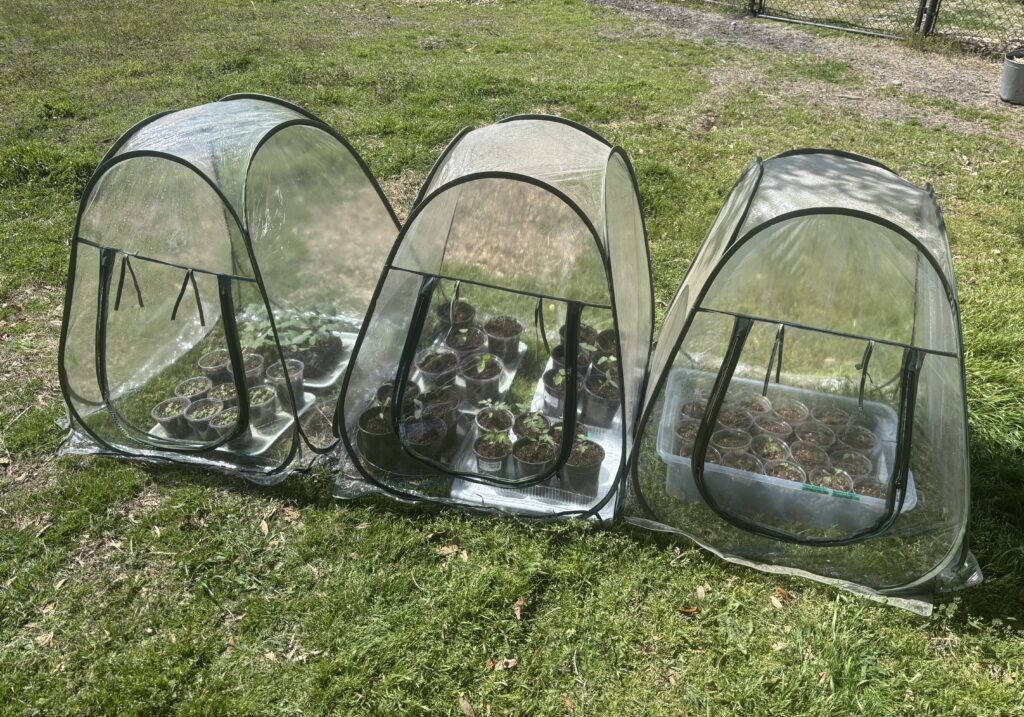
Conclusion
Stunted seedlings can be a challenge for gardeners of all levels, but understanding their causes and symptoms is the first step to making it possible to turn things around before it’s too late.By providing the right environment, nutrients, and care, you can ensure that your seedlings overcome their stunted growth and thrive into healthy, robust plants.
Remember, it’s a learning process! Don’t give up if things don’t go as planned and of coarse if you have to buy transplants from a local plant nursery to ensure you grow your garden on time, then by all means, do what you have to do. The more you practice starting plants from seeds and follow all the recommendations above the faster it will become second nature to you and you will enjoy growing your own seedlings!
